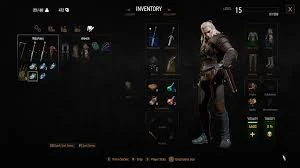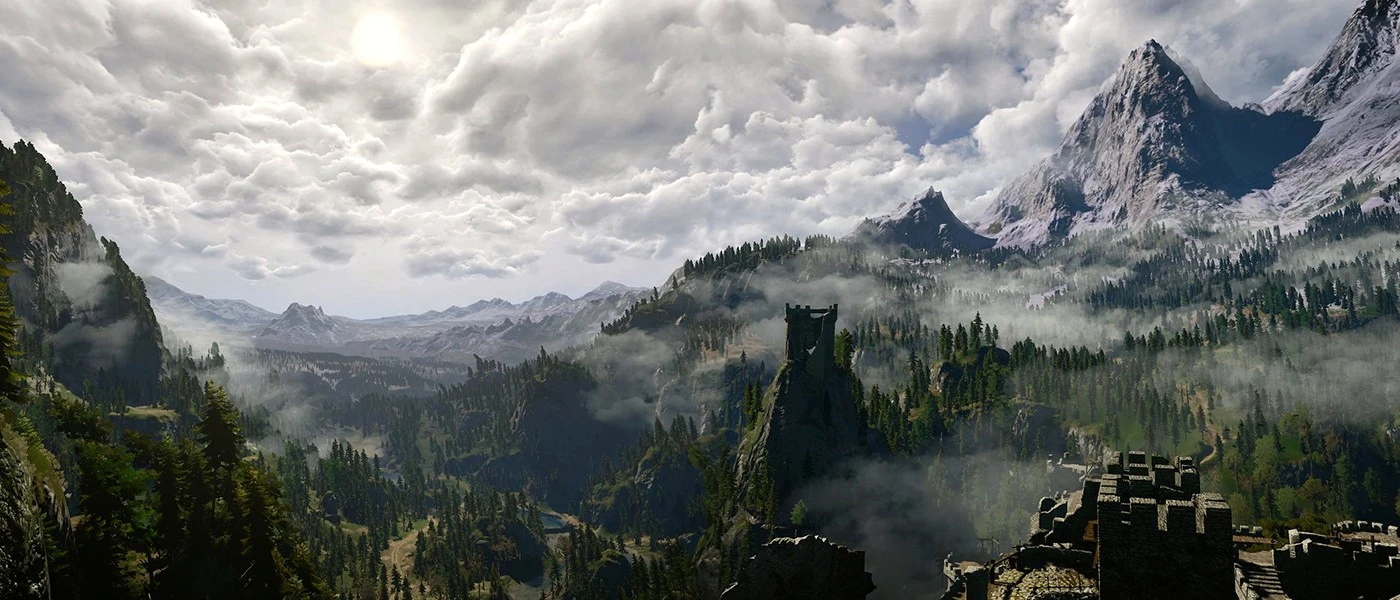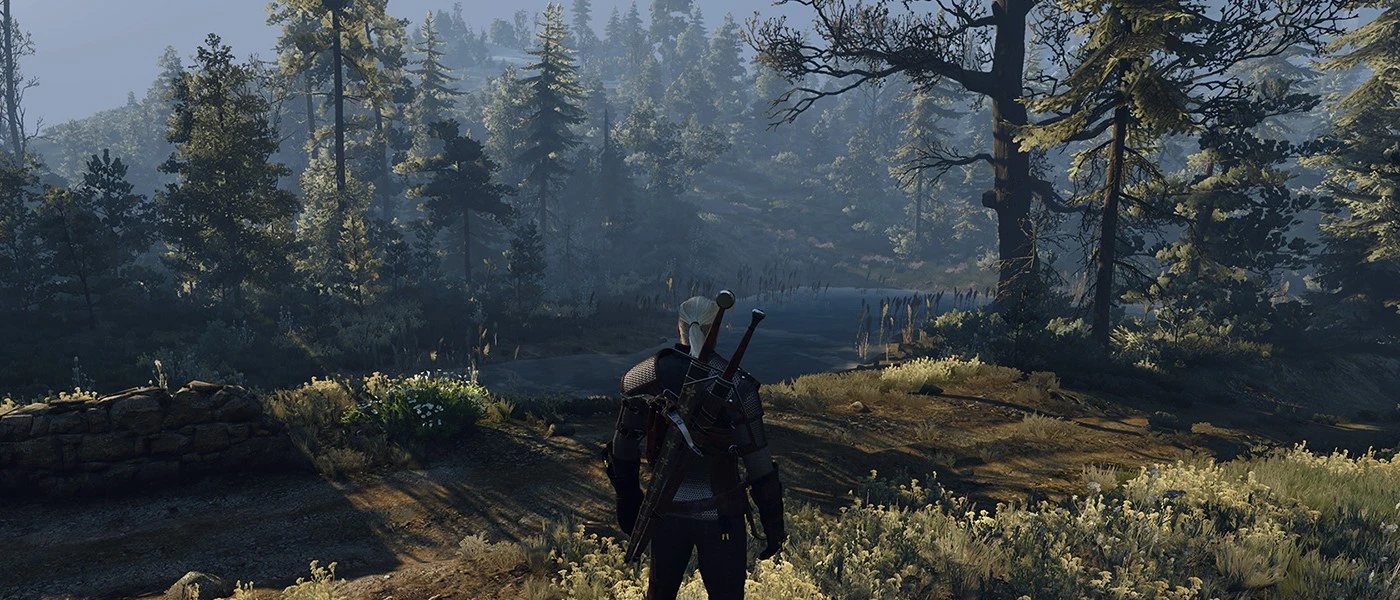In the vast and immersive world of The Witcher 3, having the right weapons can make all the difference in Geralt's monster-slaying adventures. Crafting is a crucial aspect of the game that allows players to create powerful witcher swords and other gear tailored to their playstyle. Whether you're a newcomer to the game or a seasoned witcher looking to optimize your arsenal, mastering the art of crafting is essential for success.
This comprehensive guide will walk you through everything you need to know about crafting weapons in The Witcher 3. We'll cover the fundamentals of the crafting system, including how to find diagrams and gather the necessary components. You'll learn step-by-step how to craft the best weapons in the game, from silver swords to relic swords, and discover the top witcher gear worth investing in. Along the way, we'll share valuable tips and tricks to help you become an efficient craftsman and maximize your weapon damage output. By the end of this guide, you'll be well-equipped to tackle any challenge the world of The Witcher 3 throws your way.
Understanding Weapon Crafting in The Witcher 3
Weapon crafting is an essential aspect of character progression in The Witcher 3. Geralt can find various crafting diagrams and schematics throughout his adventures, which can be used to create powerful weapons tailored to his playstyle. To craft a weapon, Geralt must first obtain the appropriate diagram and then gather the necessary components. Once he has both, he can visit a skilled blacksmith who will forge the weapon for him.
It's important to note that only blacksmiths can craft weapons, while armorers specialize in creating armor pieces. Crafted weapons often possess superior stats and additional abilities compared to those found in the wild, making them highly sought after.
Crafting Requirements
To craft a weapon, the following requirements must be met:
- Acquire the relevant crafting diagram or schematic
- Gather the necessary crafting components specified in the diagram
- Locate a blacksmith with sufficient skill to craft the weapon
- Ensure Geralt meets the level requirement to use the crafted weapon
Locating Diagrams
Weapon diagrams can be obtained through various means, such as:
- Completing treasure hunts and quests
- Purchasing from vendors and merchants
- Looting chests and containers
- Defeating powerful enemies
Some of the most sought-after diagrams belong to Witcher School Gear sets, which offer unique bonuses and abilities.
Gathering Components
Each weapon diagram requires a specific set of crafting components. These components can be acquired by:
- Dismantling unused weapons and gear
- Purchasing from vendors and merchants
- Looting from defeated enemies and containers
- Harvesting from resource nodes in the world
Common crafting components include:
| Component | Description |
|---|---|
| Iron Ore | Basic metal used in crafting |
| Silver Ore | Rare metal effective against monsters |
| Leather Scraps | Used for hilts and grips |
| Timber | Wood used for crossbow parts |
| Monster Parts | Specific monster parts used in specialized weapons |
By understanding the weapon crafting system, Geralt can create a diverse arsenal of powerful weapons to tackle any challenge the world of The Witcher 3 presents. Whether you prefer the swift strikes of a silver sword against monsters or the armor-piercing bolts of a crossbow, crafting allows you to customize your loadout to suit your unique witcher playstyle and make Geralt an even more formidable force on the battlefield.
Finding Crafting Diagrams
In The Witcher 3, there are several ways to acquire crafting diagrams for powerful witcher swords and gear. These diagrams can be obtained through treasure hunts, vendor purchases, and quest rewards. Let's explore each method in detail.
Treasure Hunts
-
Many of the best diagrams, such as the various Witcher School Gear sets, are found through treasure hunts. These hunts often involve following a series of clues and maps to locate the diagrams.
-
Witcher School Gear treasure hunts, like the Griffin School Gear hunt, require Geralt to explore multiple locations across the game world. Each location holds a piece of the diagram set, and the entire set must be collected to craft the gear.
-
Treasure hunt diagrams are usually well-hidden and may require solving puzzles, defeating powerful monsters, or navigating treacherous terrain to acquire them.
Vendor Purchases
-
Crafting diagrams can also be purchased from blacksmiths and armorers throughout the game world. These vendors often have a rotating stock of diagrams that can be bought for a price.
-
Some of the easiest diagrams to obtain early on are the first and second maps from the armorer in Midcopse. These maps can provide a good starting point for building a collection of crafting diagrams.
-
It's important to regularly check vendor inventories, as they may have diagrams for armor and weapons that Geralt cannot use yet due to level requirements. Purchasing these diagrams early ensures they are available when needed.
Quest Rewards
| Quest Type | Diagram Rewards |
|---|---|
| Main Story Quests | Unique, powerful diagrams tied to story progression |
| Side Quests | Diagrams for situational or specialized gear |
| Contracts | Monster-specific diagrams as rewards |
-
Completing quests is another reliable method for obtaining crafting diagrams. Main story quests, side quests, and witcher contracts can all potentially reward diagrams upon completion.
-
Quest-rewarded diagrams are often unique and may offer situational advantages or cater to specific playstyles. For example, a side quest might reward a diagram for a silver sword particularly effective against a certain type of monster.
-
Exploring the game world, interacting with NPCs, and pursuing quests is key to maximizing the variety of diagrams available for crafting.
By engaging in treasure hunts, checking vendor stocks, and completing quests, Geralt can amass a wide array of crafting diagrams to create the best weapons and armor in The Witcher 3. Efficiently acquiring these diagrams is crucial for tackling the game's most formidable challenges and progressing through the story.
Gathering Crafting Components
To craft the best witcher swords and gear in The Witcher 3, Geralt must gather a variety of crafting components scattered throughout the game world. These components range from common items like leather scraps and iron ore to rare materials such as monster hide and infused crystals. Knowing where to find these components is crucial for efficient crafting.
Common Components
-
Many common crafting components can be purchased from merchants and craftsmen. Blacksmiths often sell iron ore, coal, and steel ingots, while armorers may have leather scraps, thread, and cured leather in stock.
-
Looting containers, such as chests and barrels, is another reliable way to acquire common components. Geralt can find items like timber, resin, and string in various locations, from villages to abandoned camps.
-
Dismantling unused weapons and armor is a great way to obtain crafting materials. Breaking down a sword might yield iron ore and leather scraps, while dismantling armor could provide leather straps and thread.
| Component | Obtained By |
|---|---|
| Iron Ore | Purchasing from blacksmiths, looting, dismantling weapons |
| Leather Scraps | Purchasing from armorers, looting, dismantling armor |
| Timber | Looting containers, harvesting from resource nodes |
| Thread | Purchasing from merchants, looting, dismantling textiles |
Rare Components
-
Rare crafting components, such as monster hide and infused crystals, are harder to come by. These materials are often obtained as drops from specific monsters or by completing treasure hunts and quests.
-
Monster parts like hide, claws, and teeth can be harvested from slain beasts. Different monsters yield different components, so Geralt must hunt a variety of creatures to gather the necessary materials.
-
Infused crystals and other rare components are sometimes found as rewards for completing witcher contracts and side quests. Exploring the game world and pursuing these activities can lead to valuable crafting materials.
| Component | Obtained By |
|---|---|
| Monster Hide | Harvesting from slain monsters, specific monster drops |
| Infused Crystal | Completing treasure hunts, witcher contracts, side quests |
| Dimeritium Ore | Looting rare containers, purchasing from specialized vendors |
| Chitinous Shell | Harvesting from insectoid monsters, such as endregas |
By gathering a mix of common and rare crafting components, Geralt can ensure he has the necessary materials to craft the best witcher swords and gear. Exploring the game world, looting thoroughly, and taking on various quests and contracts will provide a steady supply of crafting components throughout his adventures.
Crafting Process: Step-by-Step Guide
Here is the content for the "Crafting Process: Step-by-Step Guide" section in markdown format:
-
Acquire the relevant crafting diagram or schematic: Weapon diagrams can be obtained through various means, such as completing treasure hunts and quests, purchasing from vendors and merchants, looting chests and containers, or defeating powerful enemies. Some of the most sought-after diagrams belong to Witcher School Gear sets, which offer unique bonuses and abilities.
-
Gather the necessary crafting components specified in the diagram: Each weapon diagram requires a specific set of crafting components. These components can be acquired by dismantling unused weapons and gear, purchasing from vendors and merchants, looting from defeated enemies and containers, or harvesting from resource nodes in the world. Common crafting components include:
| Component | Description |
|---|---|
| Iron Ore | Basic metal used in crafting |
| Silver Ore | Rare metal effective against monsters |
| Leather Scraps | Used for hilts and grips |
| Timber | Wood used for crossbow parts |
| Monster Parts | Specific monster parts used in specialized weapons |
-
Locate a blacksmith with sufficient skill to craft the weapon: Blacksmiths are categorized into three main levels: Amateur, Journeyman, and Master. Journeyman Blacksmiths can create higher-level weapons than Amateur-ranked Blacksmiths, while Master Blacksmiths are the rarest and create top-notch weapons that can't be obtained elsewhere. It's important to visit the appropriate level blacksmith for your crafting needs.
-
Ensure Geralt meets the level requirement to use the crafted weapon: Each crafted weapon has a specific level requirement that Geralt must meet to wield it effectively. It's crucial to consider this when planning your crafting projects to ensure you can utilize the weapon once it's created.
-
Select the desired diagram at the blacksmith and confirm the crafting: Once you have gathered all the necessary components and located a skilled blacksmith, simply choose the weapon diagram you wish to craft from the blacksmith's crafting menu. Verify that you have all the required materials and sufficient funds to cover the crafting cost, then confirm the creation of your new weapon.
-
Enhance your crafted weapon with runes and upgrades: After crafting your desired weapon, you can further improve its stats and abilities by slotting in runes or applying upgrades. Runes offer various enhancements such as increased attack power, sign intensity, or the chance to apply status effects. Upgrades can be crafted to improve the base stats of your weapon, making it even more formidable in combat.
By following this step-by-step process, Geralt can craft a wide array of powerful weapons tailored to his playstyle and the challenges he faces in the world of The Witcher 3. With careful planning, resource gathering, and the help of skilled blacksmiths, you'll be well-equipped to tackle any foe that stands in your path.
Top Witcher Gear to Craft
In The Witcher 3, the most powerful armor sets are tied to the various Witcher Schools - Griffin, Cat, Bear, and Wolf. Each set offers unique bonuses and abilities tailored to different playstyles. Let's take a closer look at these top-tier armor sets and what they have to offer.
The Griffin School Gear focuses on enhancing Geralt's sign intensity and stamina regeneration. This medium armor set is perfect for players who rely heavily on signs like Igni and Quen. Key pieces to craft include:
- Griffin School Techniques: Increases sign intensity and stamina regeneration while wearing medium armor.
- Griffin Armor Set: Provides bonuses to sign intensity and stamina regeneration.
- Griffin Steel Sword: Offers a chance to dismember opponents and increases sign intensity.
- Griffin Silver Sword: Deals bonus damage to monsters and increases sign intensity.
For players who prefer a fast-paced, high-damage playstyle, the Cat School Gear is an excellent choice. This light armor set focuses on critical hits and fast attacks. Essential pieces include:
- Cat School Techniques: Increases critical hit chance and damage while wearing light armor.
- Feline Armor Set: Boosts critical hit chance, damage, and fast attack damage.
- Feline Steel Sword: Increases fast attack damage and critical hit chance.
- Feline Silver Sword: Deals bonus damage to monsters and increases critical hit damage.
The Bear School Gear is designed for tank-style gameplay, with a focus on strong attacks and Quen intensity. This heavy armor set is perfect for players who want to absorb damage and deal devastating blows. Key pieces include:
- Bear School Techniques: Increases strong attack damage and Quen intensity while wearing heavy armor.
- Ursine Armor Set: Provides bonuses to strong attack damage and Quen intensity.
- Ursine Steel Sword: Offers a chance to stun opponents and increases strong attack damage.
- Ursine Silver Sword: Deals bonus damage to monsters and increases Quen intensity.
Finally, the Wolf School Gear offers a balanced approach, with bonuses to both fast and strong attacks, as well as Quen intensity. This medium armor set is ideal for players who want a versatile playstyle. Essential pieces include:
- Wolf School Techniques: Increases fast and strong attack damage, as well as Quen intensity while wearing medium armor.
- Wolven Armor Set: Provides bonuses to fast and strong attack damage, and Quen intensity.
- Wolven Steel Sword: Increases fast and strong attack damage.
- Wolven Silver Sword: Deals bonus damage to monsters and increases Quen intensity.
| Witcher School | Armor Type | Playstyle Focus |
|---|---|---|
| Griffin | Medium | Signs |
| Cat | Light | Fast Attacks |
| Bear | Heavy | Strong Attacks |
| Wolf | Medium | Balanced |
When crafting these top-tier Witcher Gear sets, be sure to upgrade them to their highest levels (Enhanced, Superior, Mastercrafted, and Grandmaster) to maximize their potential. With the right set equipped, Geralt will be well-prepared to tackle any challenge The Witcher 3 throws his way.
Tips and Tricks for Efficient Crafting
Here are some tips and tricks to help you efficiently craft the best weapons in The Witcher 3:
Level Requirements
-
Pay attention to the level requirements for each craftable weapon. Some weapons have a restricted level, meaning Geralt can't use them unless he meets the required level.
-
Other weapons will downscale their level to match Geralt's, allowing players to use them at any point in their playthrough. However, these weapons won't level up as Geralt progresses.
-
For optimal results, wait to craft a weapon when Geralt reaches the ideal level specified in the diagram.
Maximizing Weapon Potential
-
Equip runes to enhance your crafted weapons further. Runes add magical boosts to a weapon's abilities, increasing various stats depending on the rune type.
-
There are 10 types of runes, each with Lesser, Normal, and Greater strengths. Choose the appropriate rune based on your playstyle and desired weapon enhancements.
| Rune Type | Effect |
|---|---|
| Chernobog | Boosts attack power |
| Veles | Increases sign intensity |
| Morana | Causes a chance to poison |
- Combine or strengthen runes in any weapon with an open rune slot to maximize its potential.
Best Time to Craft
-
Focus on finding rare diagrams, such as the Beann'shie Relic Steel Sword or Viper School Venomous swords, as these powerful weapons are worth the effort to create.
-
Craft the best silver swords, like the Harpy Relic or Faustino sword, when Geralt reaches level 37 or higher to take full advantage of their damage output and additional effects.
-
For steel weapons, prioritize crafting the Tir Tochair Blade or Black Unicorn once Geralt is level 46 or above to ensure you have the most potent weapons available.
By following these tips and tricks, you'll be able to efficiently craft the most powerful weapons in The Witcher 3, ensuring Geralt is well-equipped to tackle any challenge that comes his way.
Conclusion
Crafting weapons is an integral part of The Witcher 3 experience, allowing Geralt to create powerful tools tailored to his playstyle and the challenges he faces. By understanding the crafting system, gathering the necessary components, and investing in the right Witcher Gear sets, you can ensure Geralt is always prepared for the next monster contract or story quest. Remember to pay attention to level requirements, maximize your weapons' potential with runes, and craft the best steel and silver swords at the appropriate times.
With this comprehensive guide, you now have the knowledge and skills to become a master craftsman in the world of The Witcher 3. As you explore the vast landscapes, take on new quests, and face formidable foes, your carefully crafted arsenal will be your most valuable asset. So sharpen your blades, stock up on components, and forge your path to becoming the ultimate witcher.
FAQs
-
When is the best time to craft weapons in The Witcher 3? It is advisable to wait until Geralt reaches a higher level to craft weapons since the weapons crafted will not level up as Geralt does. Crafting at an ideal level ensures the weapons are suitably powerful for your current game progression.
-
Should I dismantle or sell my old weapons and armor in The Witcher 3? Dismantling old weapons and armor is generally more beneficial than selling them. This process provides Geralt with a steady supply of materials, which are crucial for upgrading and crafting new equipment.
-
Where can I find the best crafting services for swords in The Witcher 3? Oxenfurt is the recommended location for crafting swords. In this city, located east of Velen, you can find a Journeyman Blacksmith south of the eastern entrance (available during the daytime) and an Armorer north of the inn/barber (available anytime), who can craft various items until you require services from a Master craftsman.
-
How do I craft weapons and armor in The Witcher 3? To craft weapons and armor, Geralt needs to acquire the appropriate crafting diagrams and schematics. Once obtained, these diagrams must be taken to a Blacksmith or an Armorer, who will then use them along with the necessary components to craft the desired items.








Comments